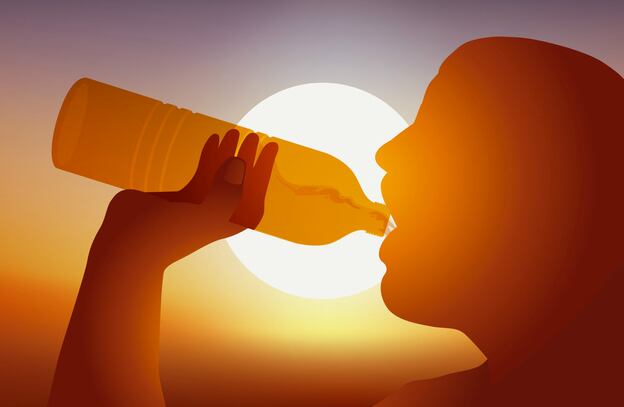The new study was published in the Journal of the International Society of Sports Nutrition. The authors are associated with two universities in Australia.
Water, water everywhere
The authors noted that while it’s well understood that water makes of most of the human body, it is far less well understood than might be assumed where that water is located and how it moves about the body.
“Defining hydration is difficult as the function and storage of fluid throughout the body is complicated. Water makes up around 63% of an adult’s body mass and is regulated in a precise manner. Of this total water volume, approximately 30–35% is intracellular fluid, 20–25% is interstitial fluid, and 5% is retained in plasma,” they noted.
“Terms such as ‘euhydration,’ ‘hypohydration’ and ‘dehydration’ are typically referring to whole body water content. However, water is stored in many different compartments not only the intracellular, interstitial, and plasma spaces, but also the gastrointestinal tract and bladder and the location of fluid will influence its function (e.g., fluid in the bladder cannot be used for sweating),” they added.
Proper hydration as sports performance metric
More attention started to be devoted to hydration as the popularity of endurance exercise started to sweep developed countries in the 1970s. Prior to that time, marathons were the province of a few dedicated athletes who were seen as extreme in the popular consciousness. Now the activity has grown to the extent that huge races with tens of thousands of participants are staged in many places around the globe and even more extreme events, such as ultra distance trail runs, have more applicants than places available.
Early on, dehydration was seen as one of the limiting factors in performance and was part of the ‘hitting the wall’ sensation that used to be a common topic of discussion in marathoning circles. Then came a heavy emphasis on hydration and a plethora of sports drinks coming on to the market to address this need.
The needle swung so far in the other direction that cases of hyponatremia started to appear in the late 1980s. While this technically describes a situation of too little sodium in the blood, and so could be the end point of severe dehydration, it can also be brought on by drinking too much water too rapidly in response to sweating, by which salt is rapidly excreted. This then can critically dilute the electrolyte concentration in the blood. The condition can lead to gastrointestinal symptoms, confusion, seizures and even death.
What’s the best way to measure?
Sensations of thirst, the color of the urine and gross measures such stepping on a scale before and after an event have been relied on for many years to assess hydration status. While the body is obviously programmed for and successful at maintaining its fluid balance, the authors said to get the most accurate data these tried and true methods are insufficient.
“When designing a whole body hydration testing protocol, many things must be considered including desired accuracy/validity, cost, location or area of interest, practicality and sample collection restraints,” the authors wrote.
The authors recommended additional measures, such neutron activation analysis, stable isotope dilution, bioimpedance plasma osmolality and tear osmolality, could all be used in a protocol to get a more complete picture of dehydration and rehydration.
“Future research should aim to better understand the movement of fluid between different compartments in the body and how to best assess the hydration of such compartments. Development of an assessment of hydration that can directly assesses intra- and extra-cellular hydration would provide valuable results when trying to understand how hypohydration influences bodily function instead of simply looking at total body water,” the authors said.
Source: Journal of the International Society of Sports Nutrition
17, Article number: 52 (2020)
Reviewing the current methods of assessing hydration in athletes
Authors: Barely OR, Chapman CW, Abbiss CR

